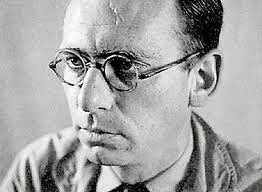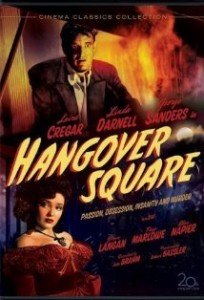“If only you could have your morning-after first and your night-before afterwards, the problem of drinking would be simplified.”
Describe d by the [London] Daily Telegraph as “a criminally neglected British author,” Patrick Hamilton wrote nine novels from the 1920s through the early 1950s, along with the famous dramas of Rope and Gaslight, and though he earned the admiration of a host of famous authors, from Graham Greene and Doris Lessing to Nick Hornby, he never achieved the popular success he deserved, either in his own time or throughout the twentieth century. In this decade, however, virtually all his novels have been reprinted in both Europe and in the US, and he is finally beginning to be recognized for his astute observations about his times and for his insights into the minds of his characters.
d by the [London] Daily Telegraph as “a criminally neglected British author,” Patrick Hamilton wrote nine novels from the 1920s through the early 1950s, along with the famous dramas of Rope and Gaslight, and though he earned the admiration of a host of famous authors, from Graham Greene and Doris Lessing to Nick Hornby, he never achieved the popular success he deserved, either in his own time or throughout the twentieth century. In this decade, however, virtually all his novels have been reprinted in both Europe and in the US, and he is finally beginning to be recognized for his astute observations about his times and for his insights into the minds of his characters.
Indicating in the subtitle that this is “A story of darkest Earl’s Court,” Hangover Square is set in what was, in the 1940s, a seamy, low-rent district of London, a place in which those who were down on their luck, out of work, or homeless could manage to scrounge through life. Bars and cheap entertainment provided evening activities for people who often did not get up before noon. George Harvey Bone, the main character here, is out of work. Like the other unemployed and under-employed people he associates with, he lives on the fringes of the entertainment business-part-time actors and actresses, managers, and movie makers who party long and hard, fueled by massive quantities of alcohol.

George’s drinking might have triggered his earliest his “blackouts,” but here they have become more frequent and more debilitating–psychotic episodes of schizophrenia which end with the demand that he kill Netta Longdon to save himself. Netta is a failed actress–a beautiful, spoiled, and manipulative woman who ignores George except when she wants money, a woman who sleeps around with his friends (though not with him), and uses him. He is so desperate for her attentions, however, that he allows himself to be degraded, always hoping that she will see him for the person he really is. As he is driven closer to the edge and as his “dead moods” get closer together, the suspense grows. “Getting killed would serve her jolly well right,” he rationalizes.
The narrative line, which t akes place inside George’s head, is strong and emotionally affecting, and though many contemporary readers will be frustrated at George’s passivity in the face of Netta’s abuse, few will fail to empathize. Based in part on his own life, the novel is an intense psychological drama written by a man who became an alcoholic at a young age, after being disfigured in an accident. Frequently developing passionate but unrequited attachments, he wrote about these women in his novels. Famed actress Geraldine Fitzgerald was recognized as the model for Netta Longdon, something her obituary confirms.
akes place inside George’s head, is strong and emotionally affecting, and though many contemporary readers will be frustrated at George’s passivity in the face of Netta’s abuse, few will fail to empathize. Based in part on his own life, the novel is an intense psychological drama written by a man who became an alcoholic at a young age, after being disfigured in an accident. Frequently developing passionate but unrequited attachments, he wrote about these women in his novels. Famed actress Geraldine Fitzgerald was recognized as the model for Netta Longdon, something her obituary confirms.
Notes: The film of Hangover Square, starring Laird Cregar, bears little resemblance to the novel in plot and emphasis.
Also reviewed here: TWENTY THOUSAND STREETS UNDER THE SKY and SLAVES OF SOLITUDE
